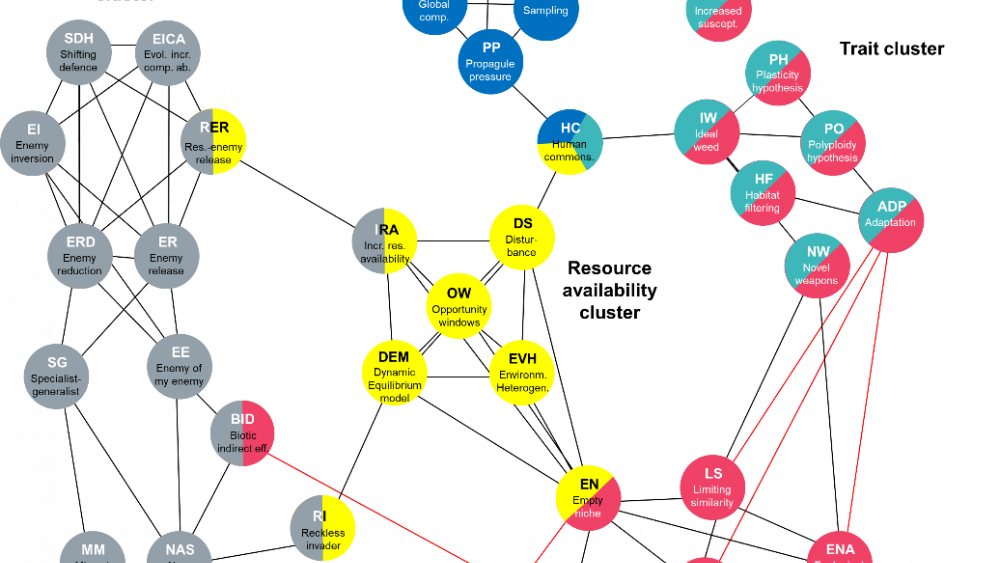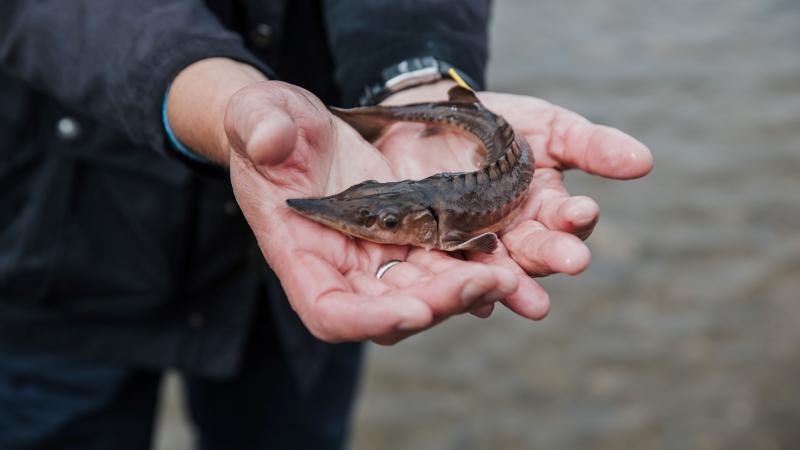
Conceptual map of invasion biology consisting of 39 hypotheses of this discipline.
The researchers started by defining 39 invasion hypotheses and then followed nine steps to create a network of these hypotheses. The network groups hypotheses in clusters that share a particular perspective on biological invasions. For example, the trait cluster combines hypotheses that focus on the biological properties of invasive species, whereas the propagule cluster contains hypotheses that relate to the human factor, in particular how often and how many individuals or populations of non-native species are introduced by humans.
With their newly developed method, the researchers created a conceptual map for invasion biology, which will soon be freely available online as an interactive tool. Users of the map can thus quickly locate similar or contradictory concepts about invasive species.
In the future, the researchers aim to also map hypotheses and concepts in related research fields, such as urban ecology, restoration ecology or other parts of biodiversity science, and to provide the conceptual maps as interactive tools online. Jonathan Jeschke calls on scientists, designers and others to participate: "Our vision is to jointly create an open and interactive atlas of knowledge covering all scientific disciplines. This can only be achieved by a large inter- and transdisciplinary team. Please contact us if you would like to become part of our team!"
Read the article online in Global Ecology and Biogeography >





